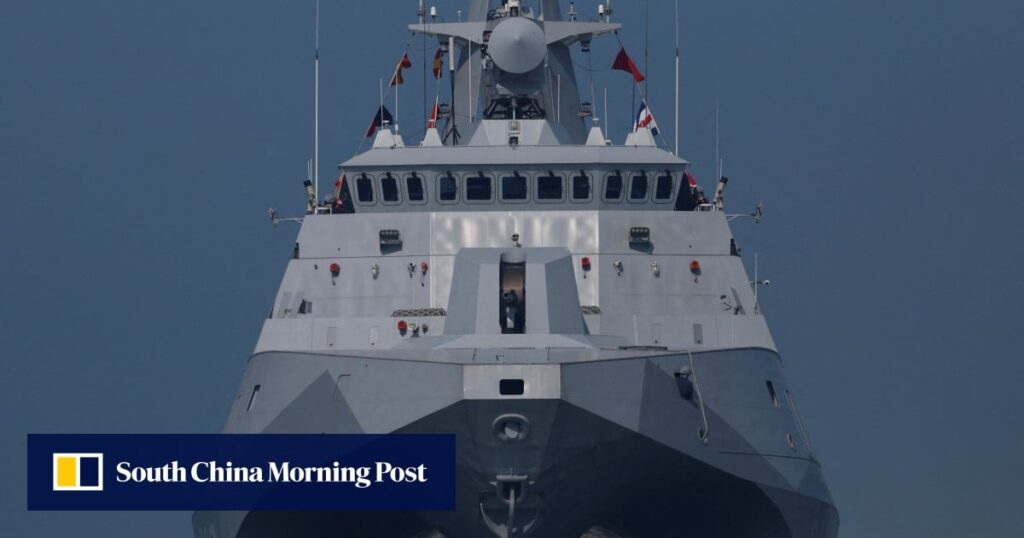Taiwan Boosts Naval Capabilities with New "Carrier Killer" Corvettes Amid Growing Tensions with China
In an effort to strengthen its maritime defense against increasing threats from China’s People’s Liberation Army (PLA), Taiwan is set to commission two new Tuo Jiang-class stealth missile corvettes, An Jiang and Wan Jiang, this week. These advanced vessels are a significant addition to Taiwan’s asymmetric warfare capabilities and are part of a broader strategic shift in the region.
"Carrier Killers" Enter Service
Nicknamed "carrier killers," the An Jiang and Wan Jiang corvettes signify a crucial enhancement to Taiwan’s naval fleet. These vessels are designed to be fast, agile, and equipped with state-of-the-art weaponry, making them highly effective against much larger adversaries. The An Jiang and Wan Jiang are the fifth and sixth ships in a fleet intended to include a total of eleven Tuo Jiang-class corvettes by the end of 2026, according to military sources.
Impressive Capabilities
The Tuo Jiang-class corvettes are 60.4 meters long and 14 meters wide (198 feet by 46 feet). They utilize a wave-piercing catamaran design to achieve a maximum speed of 45 knots (83km/h) and a displacement of 700 tonnes. These ships can operate over an impressive range of 1,800 nautical miles and are uniquely suited to both deep sea and littoral combat scenarios.
Equipped with domestically developed Hsiung Feng II and III anti-ship missiles and Hai Chien II anti-aircraft missiles, these corvettes are capable of targeting anything from land installations to aircraft carriers. Their additional armaments include 76mm cannons, Phalanx close-in weapon systems, and T74 machine guns. On top of their formidable firepower, these ships are built using stealth technology to evade radar detection, allowing them to operate effectively in shallow coastal waters.
Strategic Context
The addition of these corvettes comes at a time of heightened tensions between Taiwan and mainland China. Beijing has never ruled out the use of force to achieve what it considers the reunification of Taiwan with the mainland. Since William Lai Ching-te, a member of the independence-leaning Democratic Progressive Party, was elected as Taiwan’s leader in January, the PLA has intensified its military activities around the island.
Lai, who took office on May 20, has declared that Taiwan and the mainland "are not subordinate to each other," a stance that has further enraged Beijing. In response, the PLA has conducted large-scale military drills around Taiwan, simulating a blockade and escalating military intimidation.
Recent Escalations
The tensions were palpable last month when a stand-off occurred between Taiwanese and mainland Chinese coastguards in the waters off Quemoy (Kinmen), a Taiwan-controlled island. The confrontation began after four mainland Chinese patrol boats entered the area, highlighting the increasingly fraught situation in the Taiwan Strait.
The U.S. Stance
While the United States does not formally recognize Taiwan as an independent country, it opposes any unilateral changes to the status quo and has committed to supplying arms to Taipei. This position is a crucial element in the complex geopolitical landscape of the Asia-Pacific region.
Looking Ahead
As Taiwan continues to bolster its naval capabilities with these newly commissioned corvettes, the island seeks to deter potential aggression from Beijing. The An Jiang and Wan Jiang are expected to play pivotal roles in safeguarding Taiwan’s maritime borders and ensuring regional stability.
For further updates and detailed information on Taiwan’s naval capabilities, visit Taiwan’s Ministry of National Defense.
The commissioning of An Jiang and Wan Jiang marks a significant step in Taiwan’s proactive measures to counteract increased military pressure from China. This strategic move is not just about enhancing naval strength; it is also a clear message of Taiwan’s resolve to defend its sovereignty and maintain the status quo in a volatile geopolitical environment.
